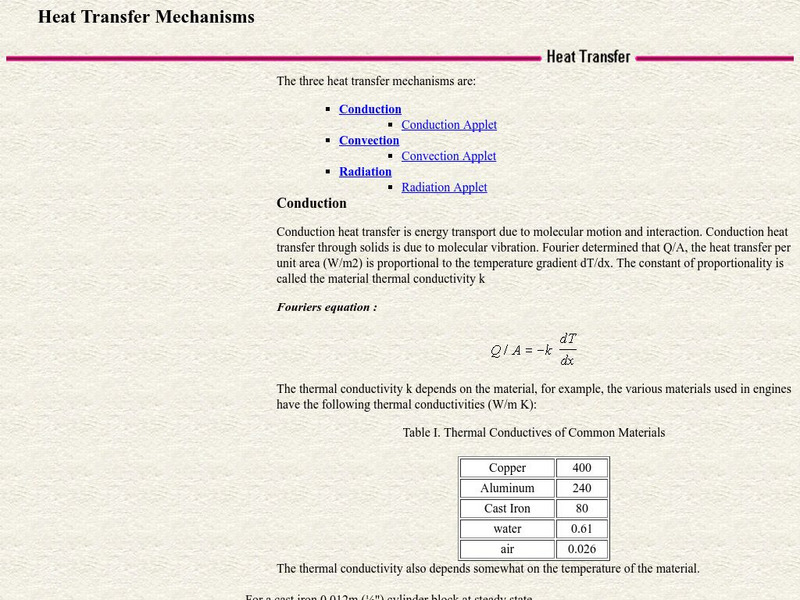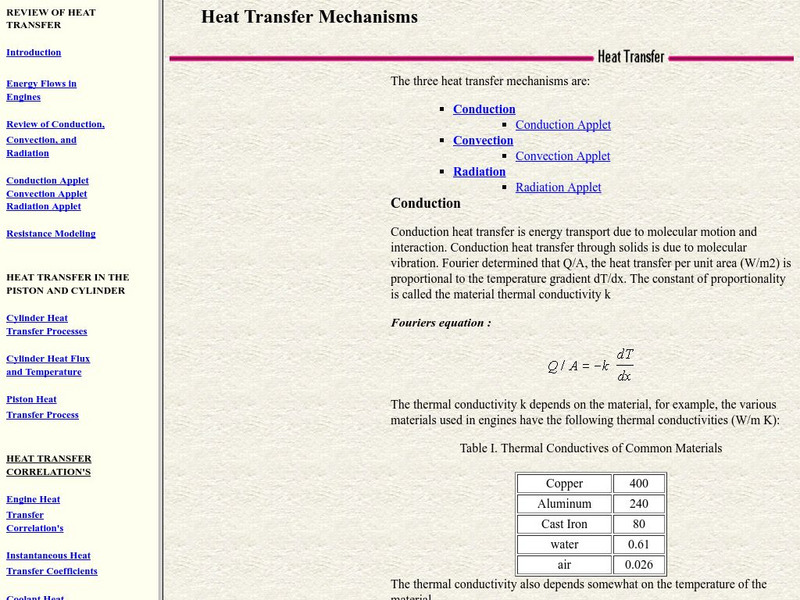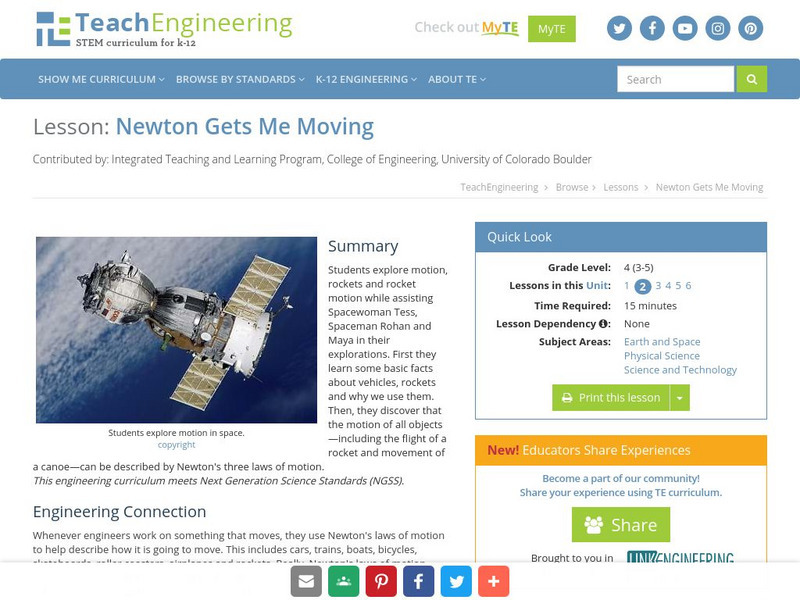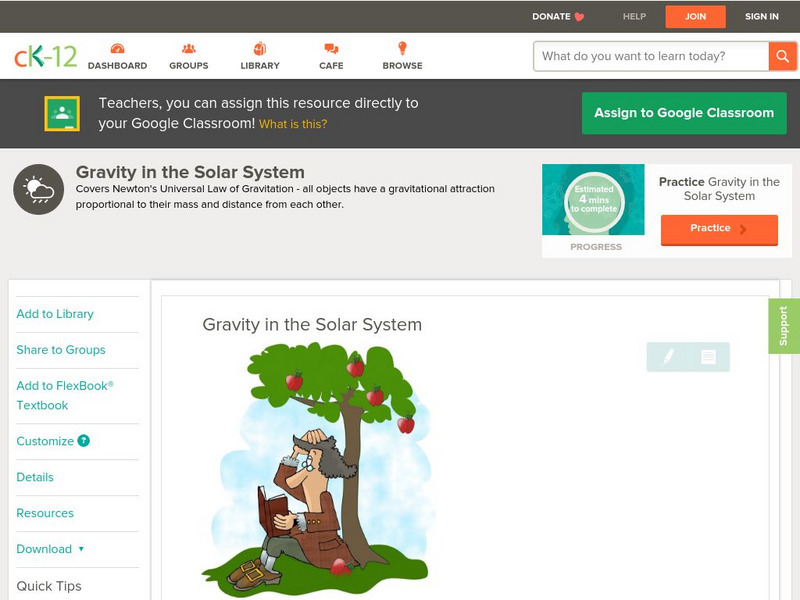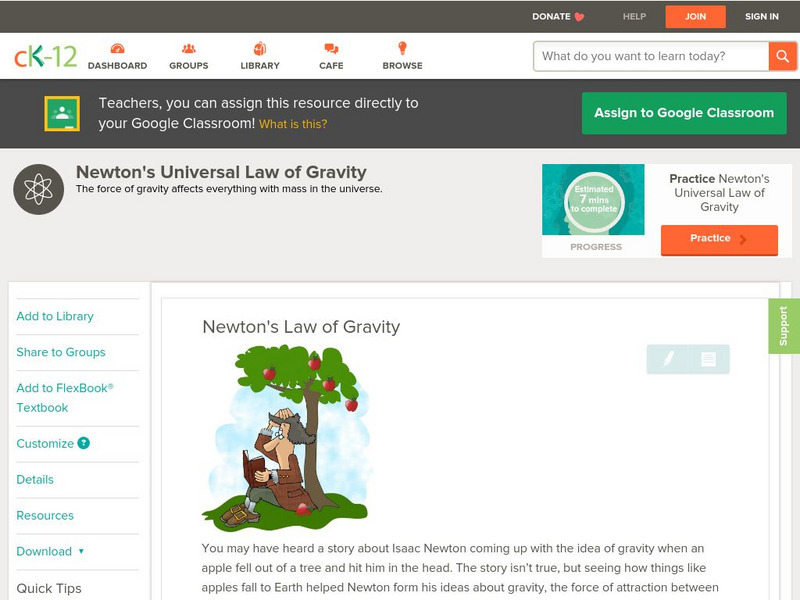PBS
Pbs: Watch the Elegant Universe
This 3 hour minseries on String Theory is divided up into 24 sections. Each is accompanied by a brief explanation and only lasts about 7 minutes. This series is perfect for any one looking to get a better grasp on this thrilling concept.
Trinity College Dublin
Trinity College: Sir Isaac Newton (1642 1727)
A valuable and lengthy biography from Trinity College by W.W. Rouse Ball is transcribed by D.R. Wilkins on this page. Mentioned are the important facets of his work in physics and astronomy.
Trinity College Dublin
Trinity College: Newton's Principia, Book Ii, Lemma Ii
A page from Trinity College that includes both Latin and English versions of Newton's Principia. Also includes a criticism of Newton's proof by Berkeley. Links regarding the historical publications are included.
Wikimedia
Wikipedia: Isaac Newton
In the Spanish langauge, discover the life and works of Isaac Newton. This site highlights his work and also provides links to obtain a greater understanding of these individual works.
Other
Wpi/app. Of the Natural Logarithm and Exponential
A page showing real life applications of natural logarithms in exponential grown and decay functions and Newton's law of cooling. Also includes exercises.
Other
Department of Mathematical Sciences: The Newton Raphson Method
This site has links to the background of the Newton-Raphson Method and links to examples.
Colorado State University
Csu: Heat Transfer Mechanisms
An excellent page from the Colorado State University with a heavy mathematical emphasis. Each form of heat transfer--conduction, convection, and radiation--is defined, compared, and contrasted. Mathematical equations governing the rates...
Colorado State University
Colorado State University: Heat Transfer Mechanisms
An excellent page from the Colorado State University with a heavy mathematical emphasis. Each form of heat transfer--conduction, convection, and radiation--is defined, compared and contrasted. Mathematical equations governing the rates...
Other
Fraser Valley Astronomers Society: Mirror Making
Directions and suggestions for making a parabolic mirror out of epoxy for use in a reflecting telescope. Links provided for sources of epoxy.
McMaster University
Mc Master Univ: Representations on the Subject of Money
This site from the McMaster University provides the full text article of Newton's work, "Representations on the Subject of Money." Newton wrote these letters while serving as head of minting operations.
National High Magnetic Field Laboratory
Magnet Academy: Timeline of Electricity and Magnetism: 1700 1749
Aided by tools such as static electricity machines and Leyden jars, scientists continue their experiments into the fundamentals of magnetism and electricity.
Other
Isaac Newton
A page at the Isaac Newton (1642-1727 CE) Institute for the Mathematical Sciences website. This page, the contents of which come from the Microsoft Encarta encyclopedia, describes the upbringing, the education, the scientific and...
TeachEngineering
Teach Engineering: Newton Rocket Car
The purpose of this activity is to demonstrate Newton's third law of motion - which states that every action has an equal and opposite reaction - through a small wooden car. The Newton cars show how action/reaction works and how the mass...
TeachEngineering
Teach Engineering: Aqua Thrusters!
In this activity, students construct their own rocket-powered boat called an "aqua-thruster." These aqua-thrusters will be made from a film canister and will use carbon dioxide gas - produced from a chemical reaction between an antacid...
TeachEngineering
Teach Engineering: Pop Rockets
Students design and build a paper rocket around a film canister, which is used as the engine. An antacid tablet and water are put into the canister, react to form carbon dioxide gas, and act as the pop rocket's propellant. With the lid...
TeachEngineering
Teach Engineering: Rockets on a Shoestring Budget
In this activity, students revisit the Pop Rockets activity from Lesson 3. This time, however, the design of their pop-rockets will be limited by budgets and supplies. They will get a feel for the limitations of a real engineering...
TeachEngineering
Teach Engineering: Motion Commotion
Students learn why and how motion occurs and what governs changes in motion, as described by Newton's three laws of motion. They gain hands-on experience with the concepts of forces, changes in motion, and action and reaction. In an...
TeachEngineering
Teach Engineering: Newton Gets Me Moving
For this lesson, students will explore motion, rockets and rocket motion while assisting Spacewoman Tess, Spaceman Rohan and Maya in their explorations. They will first learn some basic facts about vehicles, rockets and why we use them....
CK-12 Foundation
Ck 12: Earth Science: Gravity in the Solar System
[Free Registration/Login may be required to access all resource tools.] Understand the role of gravity in space.
CK-12 Foundation
Ck 12: Earth Science: Gravity in the Solar System
Understand the role of gravity in the solar system. [Free Registration/Login may be required to access all resource tools.]
CK-12 Foundation
Ck 12: Physical Science: Newton's Law of Gravity
[Free Registration/Login may be required to access all resource tools.] Newton's law of universal gravitation and factors that affect the strength of gravity between two objects.
CK-12 Foundation
Ck 12: Physical Science: Newton's Third Law
[Free Registration/Login may be required to access all resource tools.] Newton's Third Law of Motion - action and reaction forces and why they are not balanced forces.
Physics Classroom
The Physics Classroom: Finding Individual Forces
Explore the world of finding individual forces. "The process of determining the value of the individual forces acting upon an object involve [sic] an application of Newton's Second law and an application of the meaning of the net force."
TeachEngineering
Teach Engineering: Catapults!
Students observe the relationship between the angle of a catapult (a force measurement) and the flight of a cotton ball. They learn how Newton's second law of motion works by seeing directly that F = ma. When they pull the metal "arm"...








